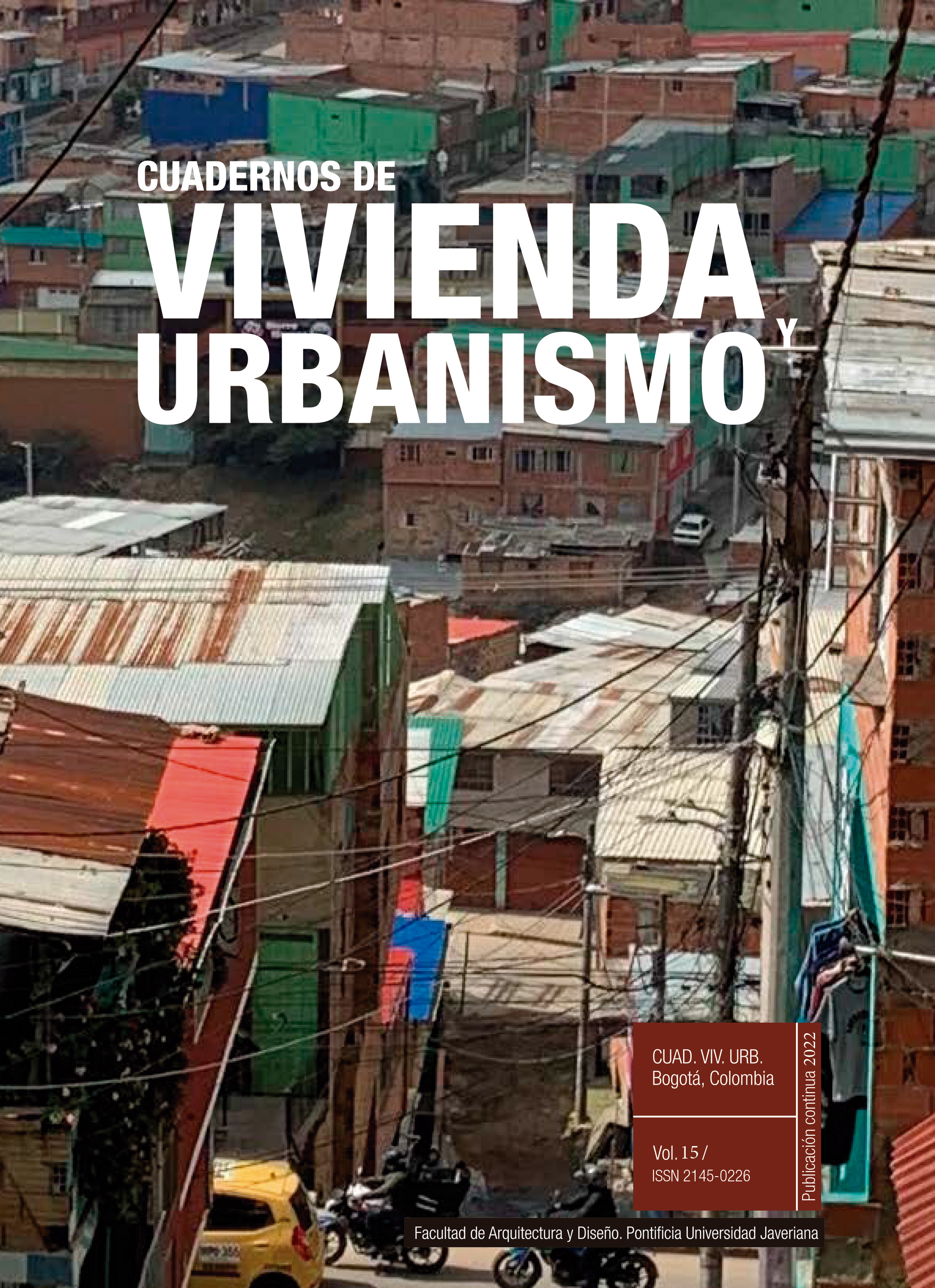Resumen
El uso intensivo del espacio interior habitacional en las ciudades del siglo XXI consolida un proceso de retiro a una esfera privada espacial no siempre satisfactoria para los usuarios. La necesidad de considerar elementos no únicamente en términos de satisfacción individual, sino también colectiva y ambiental, nos lleva a pensar en la integración de demandas de calidad de vida de los usuarios vinculadas a la conexión familiar en un microentorno saludable, por medio un modelo de habitabilidad tripartito, con tres dimensiones fundamentales: la psico-eficiencia, la socio-eficiencia y la ecoeficiencia. Partiendo del levantamiento planimétrico y fotográfico de un caso de estudio ubicado en la Ciudad de México, se procedió a un análisis basado en la tríada teórica previamente elaborada. El resultado del mismo señala que en la intersección de dichas dimensiones se ubican elementos controvertidos de la habitabilidad del entorno interior residencial (como una conexión urbana y familiar compatible con la privacidad y la salud en un ambiente lo más sustentable posible), objetivos que el proyectista tuvo que tratar de lograr negociando soluciones que se adaptaran a deseos no siempre coincidentes de los usuarios.
Arcas. J., Pagés, A., y Casals, M. (2010). Habitabilidad, la otra cara de la edificación sostenible [Ponencia]. SB10 Mad, Sustainable Building Conference.
Arcas, J., Pagés, A., y Casals, M. (2011). El futuro del hábitat: repensando la habitabilidad desde la sostenibilidad. El caso español. Revista INVI, 26(72), 65-93.
Casals, M., y Arcas. J. (2010). Habitabilidad: Un concepto en crisis. Sobre su redificación orientada hacia la rehabilitación [Ponencia]. SB10 Mad-Sustainable Building Conference.
Eleb, M., y Bendimérad, S. (2018). Ensemble et Séparément. Des Lieux pour Cohabiter. Pierre Mardaga Editeur.
Espinosa, A. E. y Gómez, G. (2010). Hacia una concepción socio-física de la habitabilidad: espacialidad, sustentabilidad y sociedad. Palapa, 5(10), 59-69.
Guerin, D., & Ginthner, D. (1999). Designers knowledge of green design: What do we do now? En IDEC, International conference abstracts (pp. 50-51). Clearwater.
Gómez Muñoz, G. M. (2014). Método de análisis diacrónico para la intervención en alojamiento con criterios ecológicos [Tesis doctoral, Universidad Politécnica].
Hayles, C. S. (2015). Environmental sustainable interior design: A snapshot of current supply of and demand for green, sustainable or fair trade products for interior design practice, International Journal of Sustainable Built Environment, 4(1), 100-108. http://dx.doi.org/10.1016/j.ijsbe.2015.03.006
Hall, E. (1989). La dimensión oculta. Siglo XXI.
Herman, T. & Lewis, R. (2017). What is Livability? University of Oregon https://sci.uoregon.edu/sites/sci1.uoregon.edu/files/sub_1_-_what_is_livability_lit_review.pdf
Kaal, H. (2011). A conceptual history of livability. City: Analysis of Urban Change, Theory, Action, 15(5), 532-547. https://doi.org/10.1080/13604813.2011.595094
Kusumarini, Y., Ekasiwi, S. N. N., & Faqih, M. (2011). Sustainable Interior: A Holistic Approach of Eco-Socio-Econo Interior. Australian Journal of Basic and Applied Sciences, 5(12), 2176-2181.
Landázuri, A. M., y Mercado, S. (2004). Algunos factores físicos y psicológicos relacionados con la habitabilidad interna de la vivienda. Medio Ambiente y Comportamiento Humano, 5(1y2), 89-113.
Ley, D. (1990). Urban Liveability in Context. Urban Geography, 11(1), 31-35.
Luna, J. G., y Gómez, A. (2015). Un acercamiento al estudio de habitabilidad en la vivienda de interés social. En R. Valladares Anguiano (ed.), Diversas visiones de la habitabilidad (pp. 91-112). Red Nacional de Habitabilidad Urbana.
Lefebvre, H. (1947). Critique de la vie quotidienne. Editions Bernard Grasset.
Martins, M. (2016). Arquitectura y calidad ambiental en ciudades del Cono Sur. Universidad Nacional del Litoral y la Universidad de São Paulo.
Mehabian, A., & Russell, J. (1974). An Approach to Environmental Psychology. MIT Press.
Mercado, S. J., y González, J. (1991). Evaluación psicosocial de la vivienda. Infonavit.
Mohit, M. A. (2014). Residential Satisfaction: Concept, Theories and Empirical Studies. Planning Malaysia, 12, 47-66.
Montaner, J. M., y Muxí, Z. (2010). Reflexiones para proyectar viviendas del siglo XXI. Dearq, (6), 82-99.
Osmond, H. (1957). A review of the clinical effects of psychotomimetic agents. Ann N Y Acad Sci, 66(3), 418-434. https://doi.org/10.1111/j.1749-6632.1957.tb40738.x
Sorrento, L. (2012). A Natural Balance: Interior Design, Humans, and Sustainability. Journal of Interior Design, 37(2), 9-33.
Sabater, T. (2015). Socioeficiencia. En A. Barrios, E. González, J. Mariñas y M. Molina-Huelva (coords.), Re-habitación, re-generación, re-programación (pp. 40-47). Junta de Andalucía-Universidad de Sevilla.
Van Dorst. M.J. (2012). Liveability. En E. Van Bueren (ed.), Sustainable Urban Environments (pp. 223-241). Springer. https://www.researchgate.net/publication/314616668

Esta obra está bajo una licencia internacional Creative Commons Atribución 4.0.


